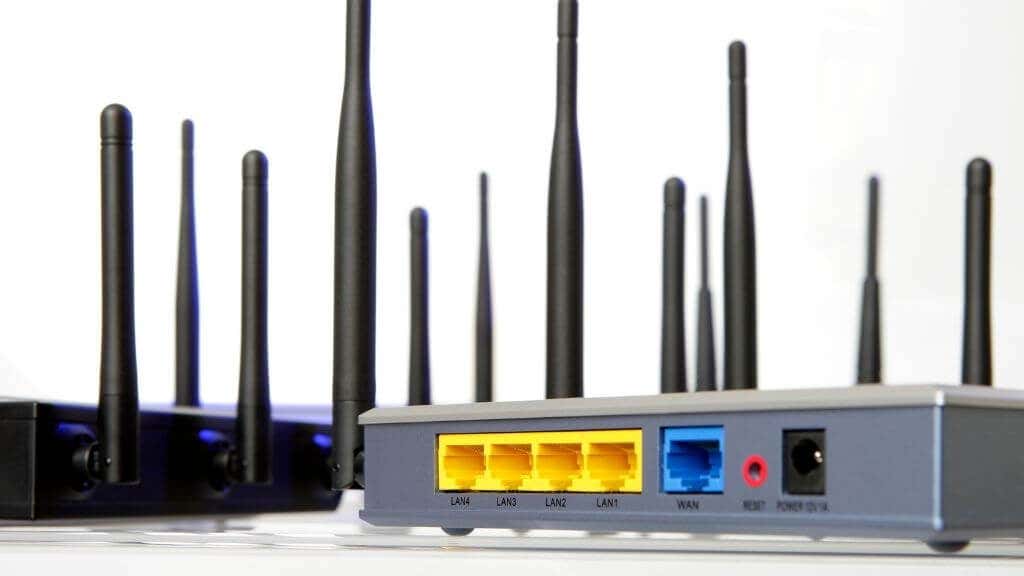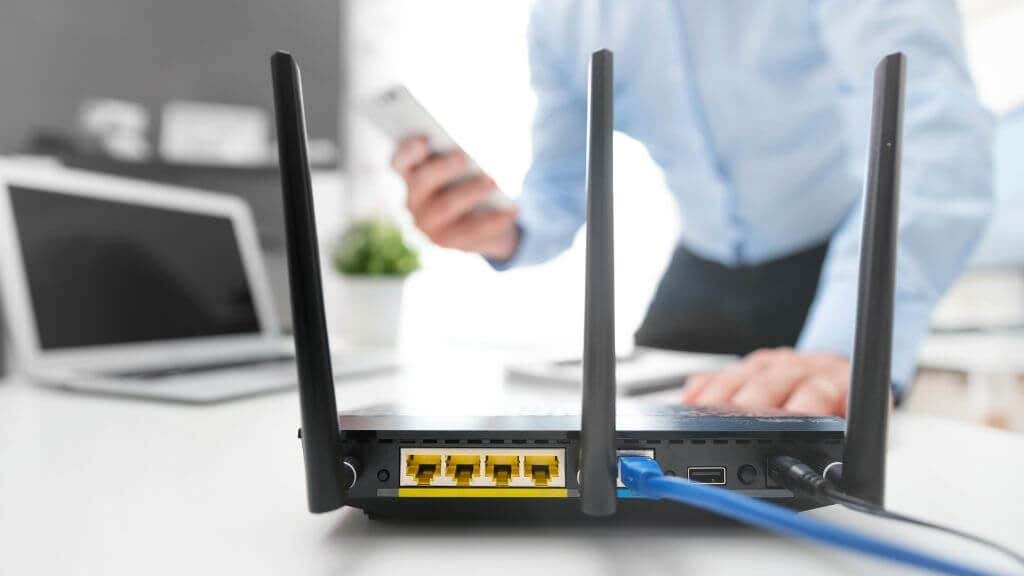These days everyone has to wire up their home with network technology, which means dealing with a long list of network jargon. Two basic networking terms are “access point” and “router.” These are different devices with different jobs, but the terms are (incorrectly) used interchangeably in some cases.
To avoid any confusion (and incorrect purchases), let’s take the time to learn the critical differences when it comes to an access point vs. a router.
What Is an Access Point?
Part of the confusion is that “access point” is short for “wireless access point.” An access point adds Wi-Fi access to a wired network and helps extend its range. So, an access point has at least some Wi-Fi hardware and an Ethernet connection. Of course, that’s assuming the wired network it’s connected to uses Ethernet, which is true in almost all cases.
In turn, the wired connection is connected to another network device, such as a switch, modem, or router.
One easy way to know that you’re working with an access point is that it will have a unique SSID (Service Set Identifier). That’s the Wi-Fi name you see when you connect to the network.
Two different access points can also connect to the same internet connection, even via the same router. But this does not mean all devices on this network can communicate with each other without you configuring the network settings to allow it.
For example, patients waiting in a doctor’s office can use an access point in the waiting room to get internet access. However, they can’t use the office printer or access the doctor’s computer.
What Is a Router?
A router is like a digital mail-sorting room. Network traffic is split into individual “packets.” Each packet contains a piece of data (such as part of a JPEG or a streaming video) and source and destination information. Routers stand at the intersection of two different networks, with different sets of IP (internet protocol) addresses.
For instance, your home router sends and receives packets when it connects to a bigger network—your ISP. Your ISP has its own routers, which are in turn connected to an even more extensive backbone network, and so on.
Your home router takes those internet packets and makes sure they go to the right devices connected to your home network. So, for example, your smart TV shouldn’t receive data meant for your smartphone.
Routers are intelligent devices that can apply sophisticated network traffic management rules to send data. For example, a router might prioritize real-time applications such as video conferencing and multiplayer video games over email or streaming video.
Routers build up “routing tables,” a list of routes between different network devices that describe how best to move data packets around the networks connected to the router.
Access, Distribution, and Core Routers
There are various types of routers, but the three main categories are:
- Access routers
- Distribution routers
- Core routers
Core routers operate directly on the internet backbone. The internet backbone consists of those network connections that underpin the internet as a whole. Think of the massive high-speed cables that connect the world across land and under the sea, and you’ll have a rough idea of what we’re talking about. Core routers connect these major backbone connections and the many sub-networks that form a hierarchy of networks all the way down to your home internet connection.
Distribution routers are mainly used by Internet Service Providers (ISPs) to aggregate and route all the network traffic from their customers and connect them to the internet at large through core routers above them in the network hierarchy.
Access routers are routers on-site in homes and offices around the world.
There are many other router classifications, depending on the specific function and network location of the device. For example, edge routers are those found at the edge of an ISP’s network. Edge routers specifically handle communication between the ISP’s network and those of other ISPs.
The Wireless Router in Your House
Although they are popularly referred to as “routers” or “wireless routers,” the little box bristling with antennas in your house is more than that.
Home wireless routers are specialized computers. Inside there’s a CPU, RAM, storage, and an operating system. The same core components as a general-purpose computer.
The “brains” of the device coordinate the different hardware components. Typical wireless routers contain a small Ethernet switch, one or more wireless access points, and the software that allows it to act as a network router, DHCP server, and so on.
High-end wireless routers can often also run network applications that allow them to work as VPN clients, media servers, and network-attached storage devices through a USB-connected hard drive.
So while your wireless router contains a wireless access point and a router, it’s far more than those two devices. For example, some wireless routers also have a modem, such as all-in-one cable modem routers. Still, most of these devices connect to an external modem via a dedicated WAN (Wide Area Network) Ethernet Port.
What About “Modems”?
While this article is not about modems, it’s essential to know how a modem is different from an access point or a router. A modem is a device that physically translates network signals from one type to another.
For example, an Optical Network Terminal (ONT) converts light pulses sent through an optical fiber to electrical Ethernet signals. Likewise, an ADSL modem converts copper telephone signals and mobile cellular modems to the same for microwave radio signals.
The term “modem” (modulator-demodulator) originally referred to devices that converted digital binary code to audio waveforms transmitted over the same frequencies used for voice phone calls, but its meaning is now much broader.
Does This Matter to You?
It’s interesting technology, but why should you care? The most important reason is that you have the option of buying an access point or a router, and if you buy the wrong device for the job, you’ll either have wasted your money or have a product that doesn’t do what you need it for.
For example, most wireless routers can operate as simple access points (AP Mode), which is great if you want to repurpose an old or secondary router. However, if all you need is an access point, paying for a fully-featured router doesn’t make much sense.
If you’re interested in taking your networking knowledge further, you should check out How to Use a Spare Router as a Wi-Fi Extender and Mesh Network vs. Wi-Fi Extender vs. Access Points: Which Is Better?.





